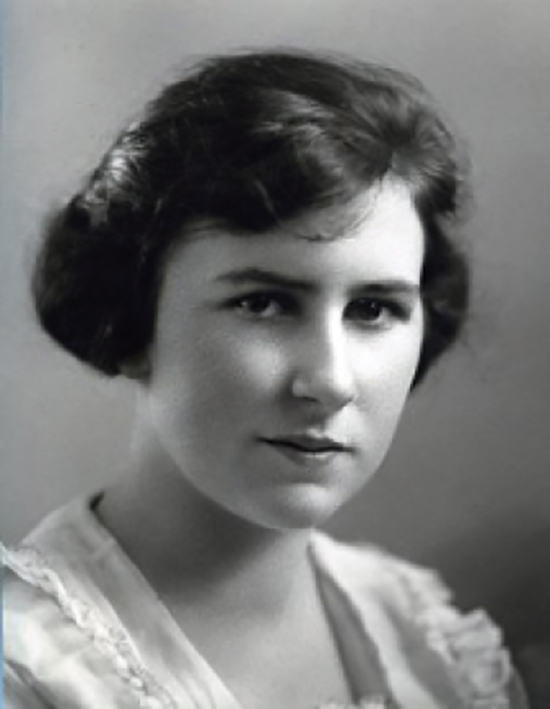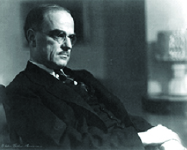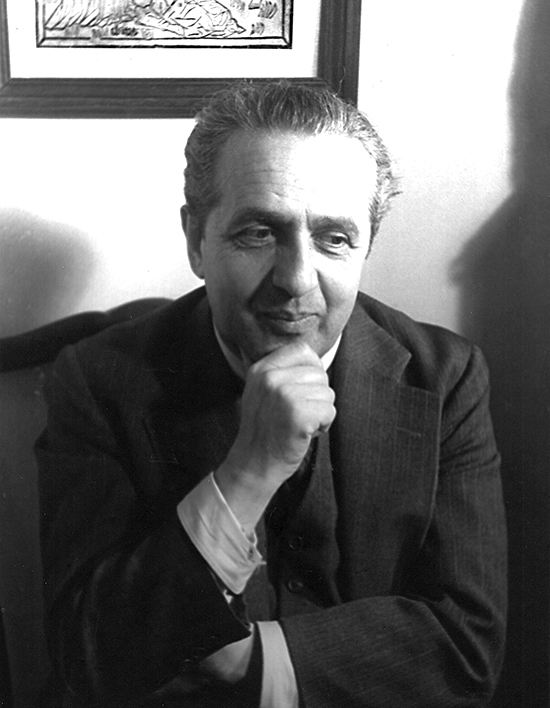
Helen Balfour Morrison, High School Photo
Helen Morrison hadn’t intended to be an artist — photography at first was just a way to make a living in Evanston, Illinois. She had taken up the craft at age 16 to help the family after her mother died, and later she and her brother opened a photography studio. When stricken with a long illness, Helen left the studio. While recuperating, she was taken to hear the charismatic landscape architect, Jens Jensen, who so inspired her that she determined to improve her skills to make a portrait worthy of him. Without formal training, she quickly became a self-made expert, making Jensen’s portrait just a year later – some say the best ever taken of him.
The artist had emerged, and by 1935 her subjects included notables as well as local leaders. Rockwell Kent sat for her and introduced her to Bill Kittredge at the Lakeside Press, who suggested she do a book of portraits of great Americans. She began, with portrait opportunities coming from references and by directly approaching visiting celebrities. Soon she had a portrait portfolio to show, with recommendations written by famous subjects, such as THORNTON WILDER.
“Like many others, I have for a long time been discouraged with the whole business of photography. It was therefore with surprise as much as with pleasure that I discovered the work of Helen Balfour Morrison. The portraits she did of my friends and of myself are natural, beautifully composed, notable works of art in themselves, and in addition each has the arresting element of interpretive psychological insight.”—Thornton Wilder, University of Chicago, April 16, 1935.

American playwright and novelist, Thornton Wilder

Sybil Shearer, 1943
In the fall of 1942, Helen met the modern dancer, SYBIL SHEARER, and soon agreed to be her lighting director. By then she and her husband, Robert, had moved from Winnetka to their newly built house in Northbrook, where Helen had a proper darkroom. Until she started accompanying Sybil to New York, Helen had never been there. These trips allowed her to add other artists to her collection of portraits.
Helen’s first museum exhibition was at the Art Institute of Chicago in 1944. Following that, her portraits were shown in major museums in the East and Midwest. Especially important was a special exhibition in New York City at the New Art Circle gallery, where J.B. NEUMANN was noted for introducing and promoting progressive living artists.
By 1950, both of Sybil Shearer’s parents were deceased, and the Morrisons invited Sybil to build a studio-residence on land near them at Northbrook. Thus began a period when Helen and Bob helped create the unique home environment where Sybil was free to create and grow as an artist, and where her need for privacy and seclusion was gently mixed with the company of friends, dogs, and visitors.
By then Helen had stopped exhibiting her pictures and had gradually sidelined her portrait work to serve as Sybil’s lighting designer, sole photographer, and artistic collaborator, with both artists heightening each other’s creativity. After Sybil and her company stopped performing in 1972, Helen resumed filming Sybil’s solos and also created the film A Sheaf of Dreams as an expression of her own art. Bob Morrison had died in 1966, and Helen’s health was now failing. She spent her last years with Sybil caring for her until her death in 1984.

New York art critic, author, lecturer, and publisher, J.B. Neumann. c. 1950
Helen Balfour Morrison left behind in her home hundreds of extraordinary portraits and other photographs – a hidden collection, its importance only now beginning to be fully recognized. In 2017 all of them, along with other archives, were gifted by the Morrison-Shearer Foundation to the distinguished Newberry Library in Chicago.
